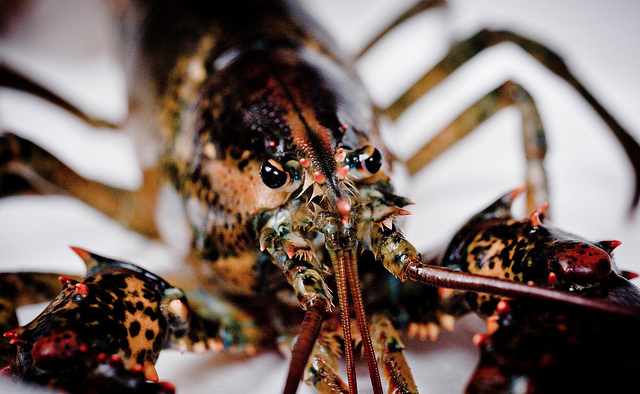Search Results for Tag: facts
#speciesoftheweek: The luscious lobster
You may know our #speciesoftheweek as a highly priced delicacy for the rich and famous. But that’s not the reason for us to chose the lobster for our hit-list of animals. There’s a lot more to the crustacean than meets the eye. In fact, lobsters are marvelous and in some of their habits quite strange creatures. They tend to do things we probably won’t like to see.
1. Lobsters are closely related to shrimp and crabs.
2. Lobsters are found in all of the world’s oceans, as well as brackish environments and freshwater.
3. Lobsters have poor eyesight but very well developed senses of taste and smell.
4. Lobsters are cannibals (at least sometimes, usually they feed on fish and mollusks).
5. Lobsters (female) carry their eggs under their abdomens for up to a year before releasing them as larvae into the water.
6. Lobsters used to be paupers’ meals in the USA during the 17th- and 18th-century. In fact, there were laws forbidding people to feed servants lobster more than twice a week.
7. Lobsters (male) literally hate each other and keep on fighting all the time over everything, a fact that females find arousing.
8. Lobsters pee in each others faces, it doesn’t matter if in a fighting or flirting situation (To do so, they have urine releasing nozzles right under their eyes).
9. Lobsters today are threatened by overfishing and pollution-related diseases.
Climate Travel Guide to Qatar, COP18 in mind
Qatar is the first Middle East country to host a major UN climate change conference. Traditionally, host countries have a big responsibility – their diplomatic skills can make a conference outcome a fail or a success.
This year, the Qatari government has a lot on the plate: A new trading scheme for CO2 emissions has to be found. The old one, agreed in Kyoto in 1996, ends in just a few weeks with the beginning of the new year.
To get a better idea of the oil rich host country of this years Climate Summit, we put togethter some facts and figures for you:
Capital: Doha
Number of inhabtiants: 1.9 Million
Ethnicty: Arab 40%, Indian 18%, Pakistani 18%, Iranian 10%
Religion: Muslim 77.5%, Christian 8.5%, other 14%
Energy mix: 100% electricity from fossil fuels
CO2 emissions per capita: 40 tons per capita. That is the largest in the world.
Food and water resources: produces fruits, vegetables; poultry, dairy products, beef; fish, before Qatar became a big player in oil and gas it was a poor pearl fisher country
Industries: liquefied natural gas, oil production and refining, ammonia, fertilizers, petrochemicals, steel reinforcing bars, cement and others
Civil Society: mixed legal system of civil law and Islamic law
Qatar is probably not the first place you have in mind for a climate conference. We also thought about it and came up with this little information film about the sense or non-sense of climate conferences like COP18:





Feedback